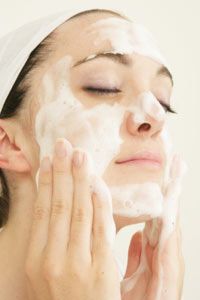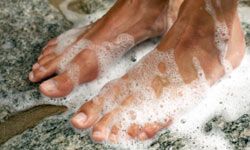If you're wondering why the condition of your skin isn't up to par, it might be time to take a look at how you're cleansing it. A good soapy lathering, a scrub with an old washcloth and a quick towel dry are cleaning steps more suited to your car than to the delicate skin on your face. If you've had a skin care routine like that since preschool, then it's probably time to rethink your approach.
First of all, when it's time to wash your face, grabbing whatever soap is close at hand is not a good idea. Not all soaps are created equal. For example, the skin on your armpits is a lot different from what's on your face, so a deodorant soap isn't really suitable to use above the neck [source: American Academy of Dermatology]. There are, however, a wide array of choices in facial cleansers. Your skin type -- whether it's oily, dry, normal or combination -- should guide your decision on what to use. Some other issues you'll need to consider include how sensitive your skin is and how prone you are to breakouts. For example, if you have extremely dry skin or a condition called rosacea, even a cleanser that seems innocuous, like hot water, might irritate your face [source: National Rosacea Society].
Advertisement
Next, give some thought to your washcloth. You don't necessarily need one, and you shouldn't be using one if you have sensitive skin. It has the potential to irritate your skin and could even make you more prone to breakouts. Water temperature is also an important consideration -- certain temperatures are kinder to your skin than others. There's even an art to drying your face, as you'll discover in the pages ahead.
There's more to a good face-washing routine than you might think. Read on to discover the steps that will help foster a lovely façade.
Advertisement

